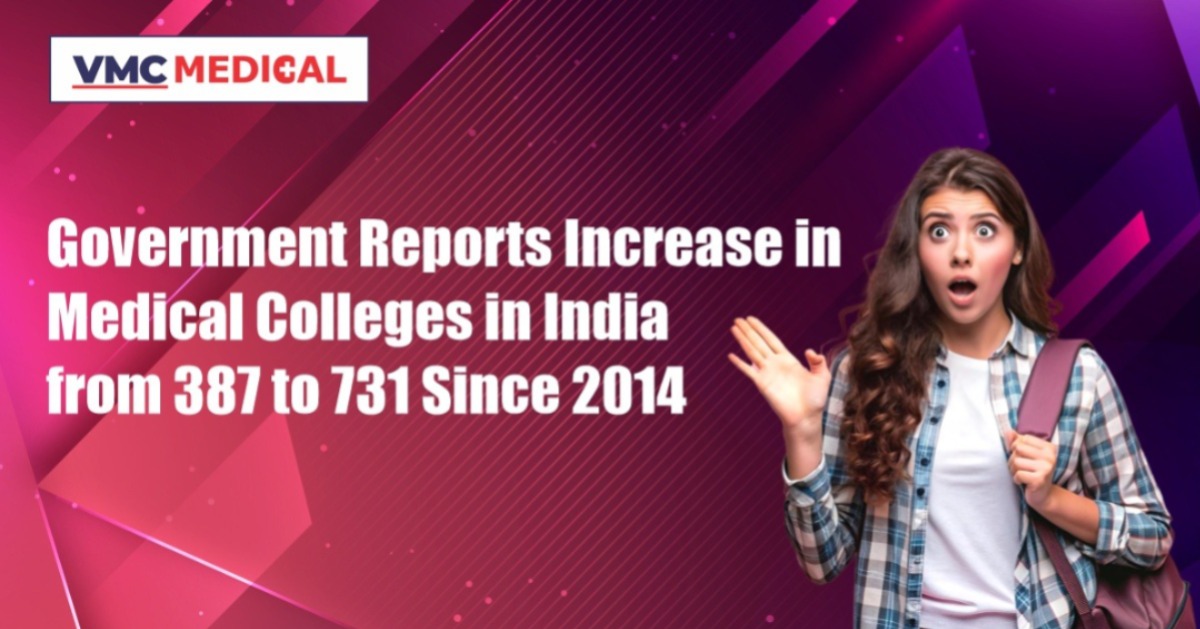Government Reports Increase in Medical Colleges in India from 387 to 731 Since 2014
 Posted On
Posted On
111 total views, 1 views today
In the past decade, India has witnessed a remarkable expansion in its medical education sector. The number of medical colleges in the country has nearly doubled since 2014, reflecting a significant commitment to increasing access to medical education. According to recent information shared by the government in Parliament, the number of medical colleges has grown from 387 in 2014 to 731 today. This expansion marks a crucial step towards addressing the growing demand for healthcare professionals in India.
Growth in Medical Colleges and Seats
Union Health Minister JP Nadda recently shared data in the Lok Sabha highlighting this growth. Undergraduate medical seats have surged from 51,348 in 2014 to over 112,000, an impressive 118% increase. Similarly, postgraduate seats have seen a 133% rise. This expansion is designed to ensure that more students have the opportunity to pursue medical education and contribute to the country’s healthcare system.
Prioritizing Health Under PM Modi’s Leadership
The Narendra Modi government has made healthcare a top priority, aiming to make quality medical education more accessible across the nation. Health Minister Nadda emphasized that under PM Modi’s leadership, India is running the world’s largest health scheme, aiming to provide comprehensive healthcare services to its citizens. This includes not only increasing the number of medical colleges and seats but also ensuring the availability of healthcare facilities across the country.
Significant Increase in Health Budget
The commitment to expanding medical education and healthcare services is also reflected in the substantial increase in the health budget. The health budget for 2013-14 was Rs 33,278 crore, which has now been raised to Rs 90,958 crore. This increase underscores the government’s dedication to enhancing healthcare infrastructure and making medical services more widely available.
Establishment of AIIMS and Other Institutions
During Atal Bihari Vajpayee’s tenure, six more AIIMS were established. In the last decade under PM Modi’s leadership, 22 new AIIMS have been approved, of which 18 are already operational and four are under construction. This expansion aims to provide high-quality medical education and healthcare services across different regions of India.
Ayushman Bharat Scheme: A Game Changer
One of the flagship initiatives of the Modi government is the Ayushman Bharat Scheme, which aims to provide free treatment to over 55 crore people. Approximately 12 crore families have benefited from this scheme, receiving free treatment facilities worth up to Rs 5 lakh per family. This initiative has significantly reduced out-of-pocket healthcare expenses, decreasing from 62% to 47.1% in recent years. The establishment of 1.73 lakh Ayushman Arogya Mandirs further supports the scheme, providing free medicines and health-related facilities, including testing services.
Addressing Healthcare Challenges
Despite these achievements, India still faces significant healthcare challenges. The increasing demand for healthcare professionals, especially in rural and underserved areas, underscores the importance of continuing efforts to expand medical education and infrastructure. The government’s focus on increasing the number of medical colleges and seats is a crucial step toward addressing these challenges and ensuring that the healthcare needs of the population are met.
The Role of Medical Colleges in Rural Healthcare
The increase in the number of medical colleges also plays a vital role in enhancing rural healthcare. Many new colleges are being established in rural and semi-urban areas, providing local students with the opportunity to pursue medical education. This initiative not only helps in retaining medical talent in rural areas but also ensures that healthcare services are available to underserved populations. By training more healthcare professionals in these regions, the government aims to improve the overall quality and accessibility of healthcare services.
Enhancing Medical Education Quality
While the quantity of medical colleges and seats has increased, the government is also focusing on enhancing the quality of medical education. Initiatives are being taken to update the curriculum, incorporate modern teaching methods, and ensure that medical graduates are well-prepared to meet the healthcare needs of the population. Continuous efforts are being made to align medical education with global standards, ensuring that Indian medical graduates are competitive on an international level.
Future Prospects and Goals
Looking ahead, the government has set ambitious goals for the future of medical education and healthcare in India. Plans are underway to further increase the number of medical colleges, improve healthcare infrastructure, and expand healthcare services to more regions. By investing in medical education and healthcare, the government aims to build a robust healthcare system that can cater to the needs of a growing population and respond effectively to future health challenges.
Closing Thoughts
The doubling of medical colleges in India since 2014 represents a significant achievement in expanding access to medical education and healthcare services. Under the leadership of PM Narendra Modi, the government has prioritized healthcare as a crucial area for development, investing in infrastructure, increasing the number of medical seats, and implementing groundbreaking initiatives like the Ayushman Bharat Scheme. These efforts are instrumental in building a stronger, more accessible healthcare system that can provide quality services to all citizens, ensuring a healthier future for India.




